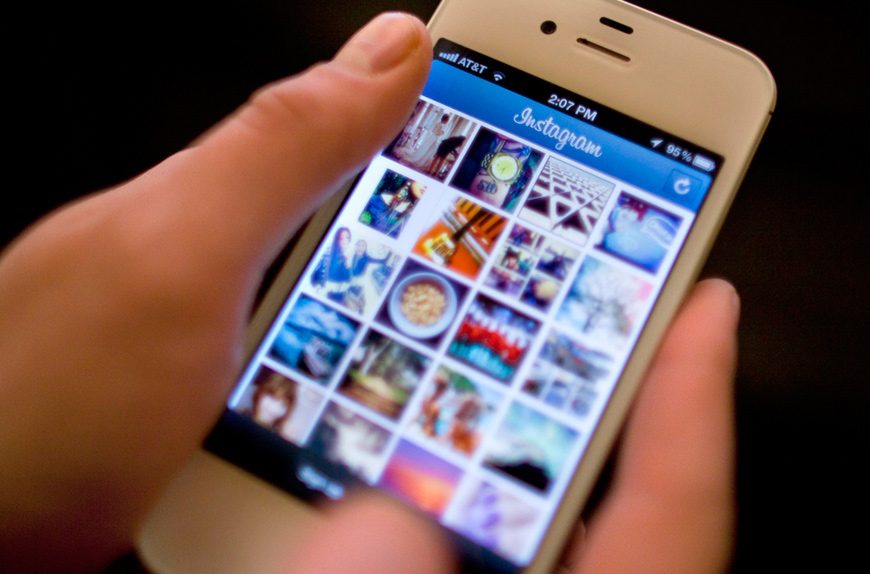It’s well established that anything one posts online these days remains permanently etched on the Internet. The moment a tweet or a photo goes up, it’s practically impossible to scrub it from its new-found digital existence. For most people, this is no big deal as the benefits to be gleaned from sharing items like photos with friends far outweigh any concerns about privacy. But once someone starts profiting from your personal photos, the dynamics of the equation completely change.
Meet Richard Prince, an “artist” whose skill set consists of photographing other people’s photographs, adjusting them slightly, and then selling them for enormous profit. It admittedly sounds bizarre, but Prince has been making a living doing just that for decades now.
DON’T MISS: Pirate’s paradise: cCloud TV streams HBO, ESPN and 50 other live channels for free
Prince’s most recent exhibit in New York City, which ran in late 2014 at the Gagosian Gallery, consisted of photos Prince pretty much lifted without permission or notice from Instagram. Prince’s “art” in this case involved finding photos of women on Instagram, blowing said photos up into 6 ft tall prints (48×65), and selling them for a hefty profit. The only adjustment Prince made to the photos involved adding a fake Instagram comment under the username richardprince1234. Sometimes, perhaps when he’s feeling especially creative, he might even toss in an emoji in there as well. And sometimes, he uses emojis exclusively. Talk about talent!
And just how much are people willing to pay for these blown up Instagram photos from random individuals?
$90,000.
Impressively, every single Instagram piece Prince put up for sale sold for a whopping 90 large.
Almost comically, one Instagram user whose photo was included in the exhibit posted about her surprising new fame.
Naturally, Prince has been sued before for copyright infringement. In 2011, photographer Patrick Cariou sued Prince after discovering that he essentially stole Cariou’s photos, added the most minor of adjustments, and wound up netting the gallery where they were displayed $10 million. Prince wound up settling that suit before a Federal Appeals Court in 2013, somewhat surprisingly, ruled that Prince’s work constituted fair use.
Below is an example of Prince’s modifications courtesy of Petapixel.
And highlighting the type of guy that Richard Prince truly is and what he thinks about other’s people’s work, here he is in his own words in a 2011 interview.
So anyway, unfortunately I took too many of these Rastafarian (images) from this guy and I didn’t really even think to ask. I don’t think that way, it didn’t occur to me to ask him and even if I did and he said no, I still would have taken them. I figured I’d do them and maybe if he objected I’d deal with that later.
And through all this, Prince is a bonafide multi-millionaire.
What’s even more peculiar is that there’s a not so subtle undercurrent of pretentious nonsense that permeates through attempts to rationalize Prince’s work as art.
To wit, check out this quote from Guggenheim curator Nancy Spector about Prince:
Prince’s work has been among the most innovative art produced in the United States during the past 30 years. His deceptively simple act in 1977 of rephotographing advertising images and presenting them as his own ushered in an entirely new, critical approach to art-making—one that questioned notions of originality and the privileged status of the unique aesthetic object.
Another example comes in the form of this glowing 2007 feature on Prince’s work from The Washington Post:
The photographs of Richard Prince, one of today’s most influential artists, did something rather similar when he hit the New York scene in 1977 at age 28. Except that his great innovation was to point his camera at some of the other photos already out there that make up such a crucial part of daily life. That innovation earned him his retrospective, which is filling most of the Guggenheim Museum and dominating the entire fall art season in New York.
…
In Prince’s well-known pictures of half-naked biker chicks, the dots are sometimes so big, and the photography and printing that he captures so crude, that we can tell they’ve come to us from the back pages of cheap magazines and from the bottom end of our culture. That keeps us, as viewers of the art, at one remove from the chauvinistic world of the original photos — able to look at the pictures, and contemplate their meanings, without buying into their worldview.




